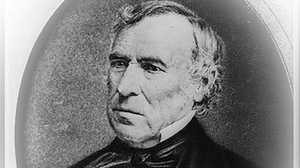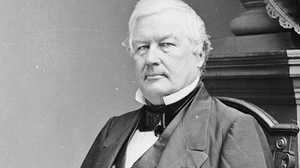11th President

Terms: 1845-1849
Political Party: Democrat
First Lady: Sarah Childress Polk
Vice President: George Mifflin Dallas
Overview
Born: November 2, 1795, in Mecklenburg County, North Carolina... James K. Polk, the original "dark horse" candidate, laid out his foreign policy and domestic aims early, achieved them in one term and then declined to run again. Billed as the "Manifest Destiny" candidate, Polk negotiated the Oregon territory to the north. His attempt to acquire California and New Mexico from the south provoked the Mexican War... Died: June 15, 1849.
The Era
1846: The Liberty Bell cracks
1846 - 1850: Irish potato famine
1846: Johann Gottfried Galle observes the planet Neptune
1847: Karl Marx and Friedrich Engels publish The Communist Manifesto
1847: Liberia becomes an independent republic
1848: A popular revolt ousts Louis Phillipe, king of France
1848: The first convention for women's rights, organized by Lucretia Mott and Elizabeth Cady Stanton, is held in Seneca Falls, New York
Domestic Policy
Polk was the last strong president before Lincoln, and he achieved most of the stated domestic goals of the Democratic Party, namely, substantially curtailing the use of federal funds for internal improvements, the restoration of an independent treasury and a reduction in tariffs.
Foreign Affairs
Polk arrived in the White House with two major foreign policy objectives: settling the borders of the Oregon territory, and acquiring California (his plan to annex Texas was pre-emptively passed in a bill in Congress). The American position on Oregon is summed up by the rallying cry of "Fifty-four forty or fight!" Americans wanted to set its borders at the southern tip of Alaska. The British refused to relinquish their hold on British North America and a compromise was reached, extending the border between the United States and what would soon become Canada to the 49th parallel, excluding the southern tip of Vancouver Island. To the south, Polk offered to buy California for $20 million but the Mexican government refused. Polk sent General Zachary Taylor into the still-disputed Texas territory, and the presence of American troops on recently Mexican soil set off a war with Mexico. By 1848, Mexico was defeated and agreed to sell territory that included California, New Mexico, Arizona, Nevada, Utah and parts of Colorado and Wyoming for $15 million plus reparations.
Presidential Politics
Polk began 1844 as a strong contender for the Democratic vice presidential nomination. However, the likely presidential nominee, Martin Van Buren, was a polarizing figure. When Van Buren's position against the annexation of Texas became known, ex-president ANdrew Jackson and others threw their support behind Polk, as an expansionist candidate. His territorial ambitions allowed him to win a thin majority over the Whig Henry Clay, who also opposed annexation. Having achieved all the goals he set for himself in an exhausting four year term, Polk retired to Nashville and died three months later.








